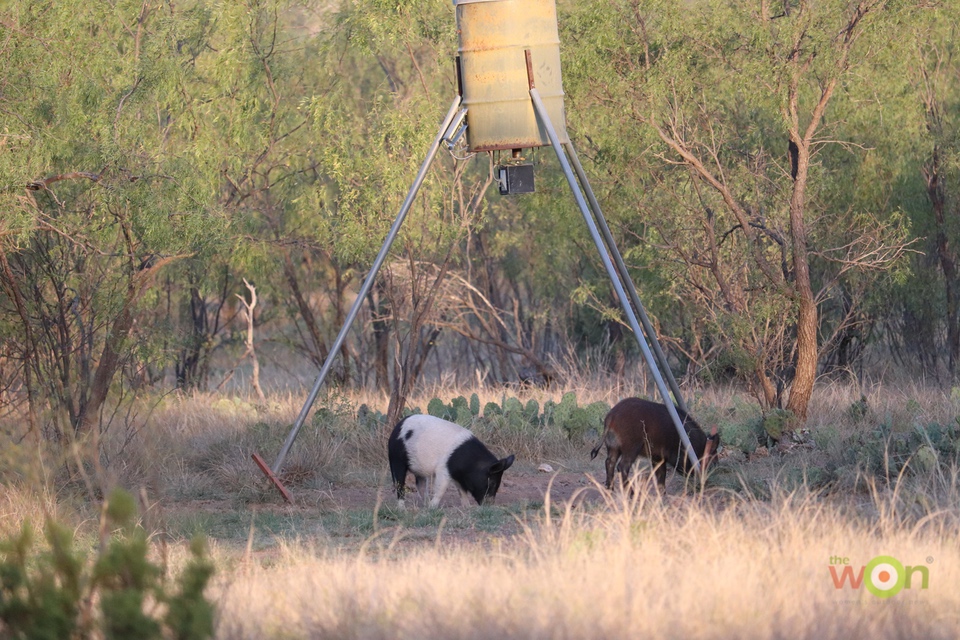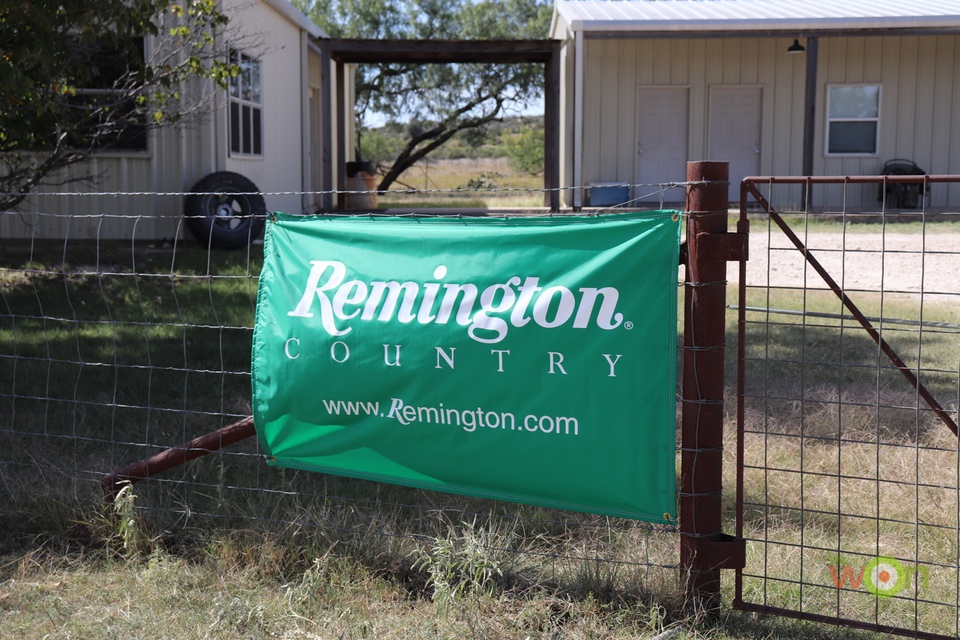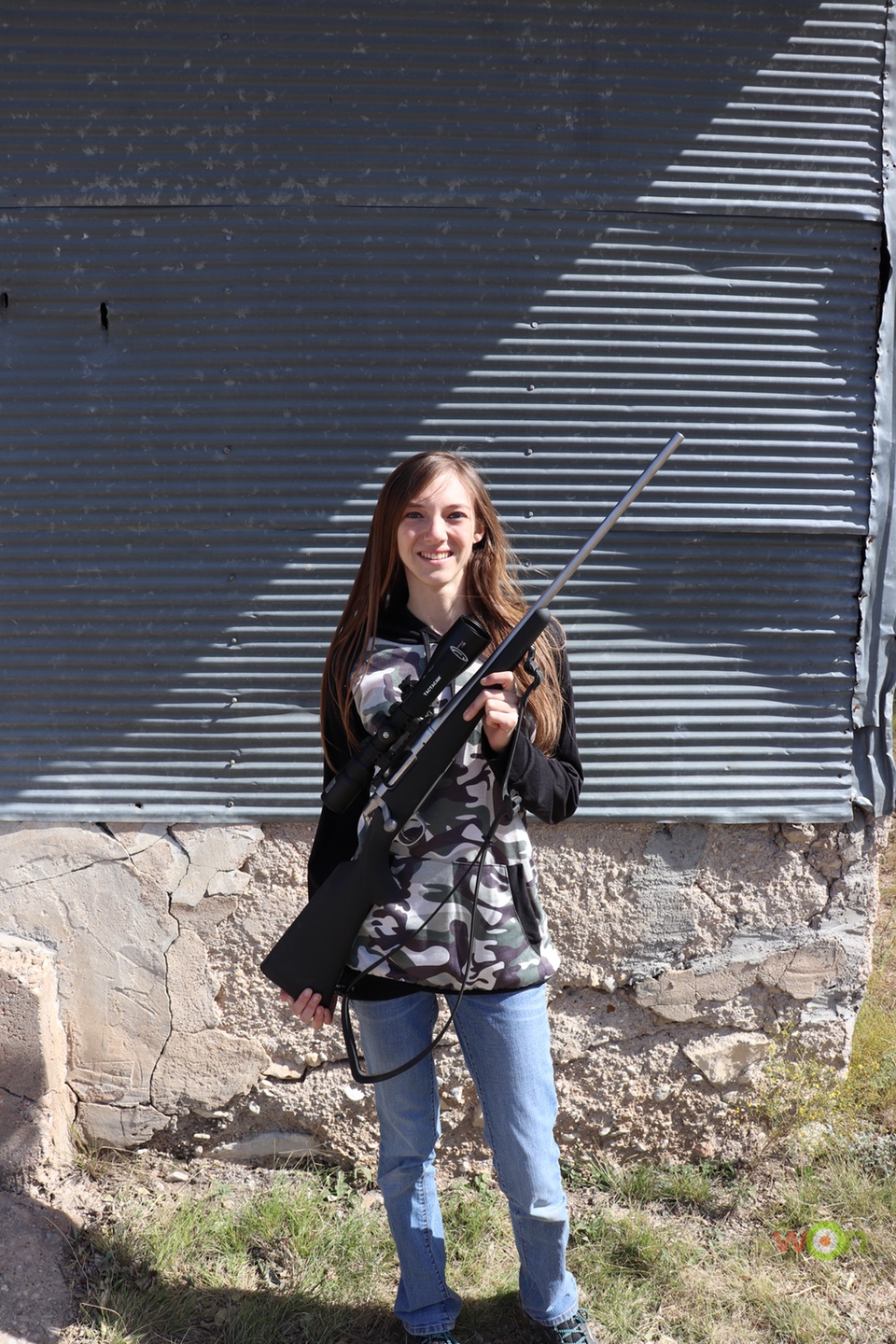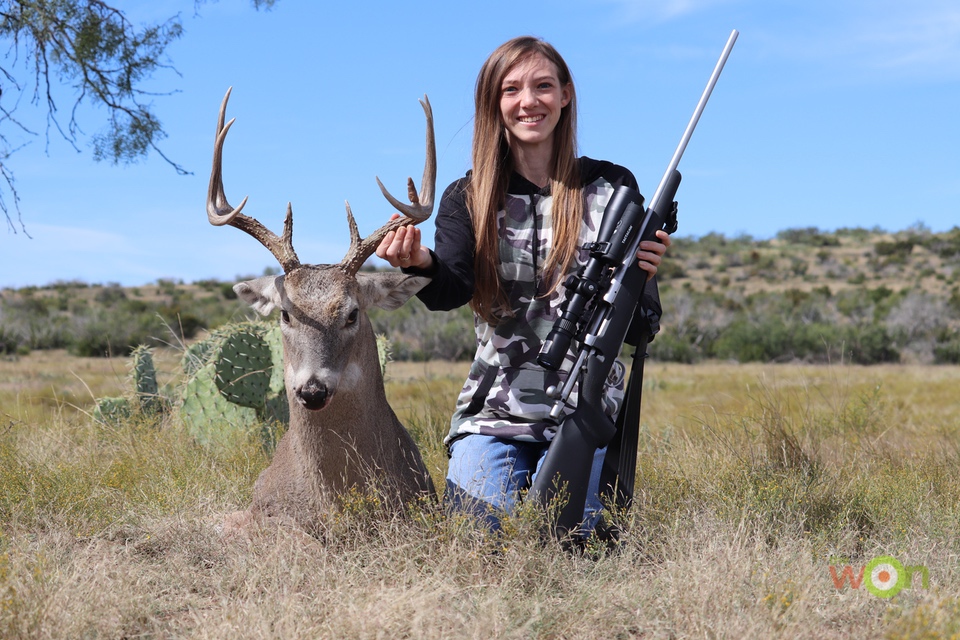The sun is rising over the foothills in San Angelo, Texas and I am realizing just how different the landscape is compared to my native Maryland rural farm land. I’m used to corn and soybean fields as far as the eye can see. Maryland whitetail hunting usually consists of climbing trees to see down into holly thickets, or box blinds on the field edges. We typically don’t use feeders and the terrain changes from one farm to the next.
Kat Haas Outdoors is sponsored by Remington Outdoor Company
I am sitting in a pop-up blind with my hunting guide, Ruben. My guide is a short gentleman with a kind face and grey hair. He is a Texan, born and raised, and sports a thick accent to prove it. We are watching a small group of feral hogs chow down on the corn that just flew out of the feeder moments earlier. The deer start to filter out onto the path that the guides use to get around the S Ranch. I’m so excited, I can’t even blink as I observe the deer.

I’ve tried hunting whitetail out of pop-up blinds back home before. We set it outside to get scent free for weeks before placing it in the brush. It would then sit out for another few weeks and get sprayed with scent killer almost every day. We even have brush it in so that it would blend in with the area and not look suspicious. Did any of that work? No. The deer still wouldn’t come within 40 yards of the blind during archery season.
We sat in the blind, having a full conversation about everything hunting and gun related. I pull out my camera and taking pictures of all these deer that couldn’t have cared less about our pop-up blind. Ruben and the other guides at Wildlife Systems Inc. put up the blind the afternoon before we all arrived. The camera is clicking away and the deer don’t even notice. Every so often one of the younger bucks walks closer to us, checking to see where those pesky hogs are. Once he sees them, he trots back over to the others and stays there.

I watch in amazement. The few bucks I’ve seen back home are beyond skittish. A squirrel can snap a branch the wrong way and they hightail it back into the thickest part of the woods. I’ve never seen a group of bucks so relaxed that close to humans. Prior to this particular hunt, I didn’t take any of the usual scent-free precautions that I usually use when hunting.
That evening Ruben and I moved into a box blind on a different part of the ranch. I hadn’t taken a shower with scent-free soap, nor did I even change out of my camo to keep my clothes scent free. Even during firearms season, we change out of our camo between morning and evening hunts to keep our scent to a minimum. These Texas bucks are something else, because they just didn’t care that Ruben and I walked through the area that they stood in waiting for the feeder to release their dinner. I know they could smell us, they just didn’t seem to care.
During that evening hunt, we watched a small group of bucks come down to the feeder. The wind is blowing hard across the Texas landscape as 9-point and 10-point bucks make their way to the feeder. Ruben determines that the 9 point is at least 5-1/2 years old and definitely a shooter. This buck tested my patience, offering up a perfect 100-yard shot before turning away. Trying to slow my breathing, the world slowed around us. I knew I had a clear shot, but I didn’t know for how long.

My Remington Model Seven, chambered in .260 Remington with a Bushnell scope, rested on the frame of the window with the crosshairs positioned over this buck’s vitals. How long would he stand still? Is it time for the feeder to go off? If the feeder goes off, will I get another shot? All of these questions swirl though my mind as I try to focus on the shot. I squeeze the trigger, but felt the recoil as I watch my buck run up the hill towards us and fall behind the thick brush. Success – and I would tag him later.
As my buck ran, the other 4 or 5 bucks didn’t even flinch. They jumped at the sound of the gunshot, but quickly returned to the base of the feeder. I watched my buck, but I also kept an eye on the other bucks. They wandered around until the feeder went off, which seemed strange, since other noises and smells didn’t seem to bother them.

You would have thought a bomb went off under that feeder. Those bucks ran across the road and halfway up the side of the next hill while the corn rained down. Awestruck by the beauty desert of San Angelo, southwest of Dallas, I gazed at the sunset across the dry, dusty landscape as we dove back to camp. By the last evening of our trip, I already started thinking of how I could find my way back.
Even my roommate, Jessica Nyberg, who hails from Minnesota, also commented on the behavior of these Texas deer. We spent an evening sitting in the blind by ourselves on the lookout for some feral hogs. Instead of hogs, we watched multiple groups of bucks come and go. I sat in amazement, as I watched 2 of the bucks fighting, more so that they didn’t care about our presence. Jessica and I decided to donate our deer’s meat to a local food pantry, and I am looking forward to seeing the shoulder mount when it’s finished at the taxidermist’s shop.
No matter what environment we hunt, deer act differently. What was the best part of hunting in Texas versus hunting my usual Maryland spots? I would have to say meeting new friends and making all new memories, particularly noting the contrasts between my home range bucks and these whitetails.
From an early age, Kat Haas' love of the outdoors has been constant and unwavering. Kat spent countless hours outside with horses when she was young. As she grew, so did her passion for the outdoors. She started shooting at the age of 14. By the time she was 21, she was hunting and trapping. Kat blogs at kathaasoutdoors.com to inspire other newcomers, and those who have nobody to teach them, to find their inner passions for the outdoors. View all posts by Kat Haas